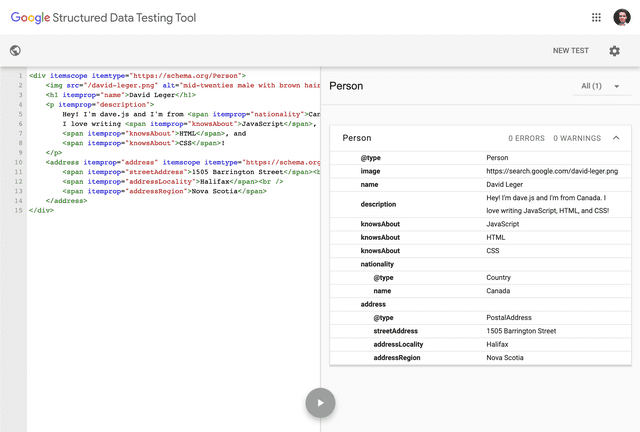Schema.org was an unknown unknown to me for most of my time as a frontend developer. I have been building websites since 2010 and it was just over a year ago when I started at Manifold that I learned of its existence.
As someone who keeps up with modern web development trends, Schema.org flew under my radar for far too long. Why?
No one talks about it! Ever!
Well, now I am.
What is Schema.org?
Established as an open standard by Google, Microsoft, Yahoo, and Yandex, Schema.org cut its v1 release waaaay back in April 2013. Yes, it has really been around for that long. However, it continues to evolve to support how people use the web in new and unpredictable ways.
So what the heck is it? According to the Schema.org homepage:
Schema.org is a collaborative, community activity with a mission to create, maintain, and promote schemas for structured data on the Internet, on web pages, in email messages, and beyond.
In basic terms: Schema.org helps give meaning to web content. It builds on the concepts of semantic HTML elements and gives richer meaning to web content.
Just like semantic HTML, Schema.org helps with search engine optimization (SEO). By giving more context to your content, search engines can better parse and categorize your content, making it easier for people to find. Search engines can even use this structured data to create rich previews.
In this preview for Avengers: Endgame on IMDb we see rating data has been added to the search result. This is because IMDb has properly tagged the content using Schema.org.
Another way to think of Schema.org is it’s like ARIA, but for SEO instead of accessibility. It doesn’t change the functionality of your website but enhances it for a specific audience (in this case, that audience is search engines).
Adding Schema.org to HTML Content
Schema.org supports several encodings, however, the most common one used is Microdata, which allows us to directly tag markup with schema data via HTML attributes.
The API is quite simple. There are just three attributes:
itemtype: Defines the schema of an item.itemscope: Defines the container of an item.itemprop: Defines a property on an item.
Basic Usage
Here’s a simple example using the Person Type:
<div itemscope itemtype="https://schema.org/Person">
<img
src="/david-leger.png"
alt="mid-twenties male with brown hair and blue eyes"
itemprop="image"
/>
<h1 itemprop="name">David Leger</h1>
<p itemprop="description">
Hey! I'm dave.js and I'm from <span itemprop="nationality">Canada</span>. I
love writing <span itemprop="knowsAbout">JavaScript</span>,
<span itemprop="knowsAbout">HTML</span>, and
<span itemprop="knowsAbout">CSS</span>!
</p>
</div>The itemscope and itemtype are set on the top-level <div> so that every itemprop within it belongs to the Person type.
The itemtype value is simply the URL of the documentation for the type you want to use. In order to know which itemtype and itemprop values best fit your content, you can research the Schema.org docs which have detailed descriptions and examples for how each schema type should be used.
Notice how description wraps two additional itemprops. Regardless of the level, itempropss will be associated with the closest ancestor itemscope. We can also define multiple instances of the same itemprop as shown with knowsAbout.
Nested Items
What if we want to nest items within an item though? For that, we can define a new itemscope. Let’s expand on our Person item and add a PostalAddress.
<div itemscope itemtype="https://schema.org/Person">
<img
src="/david-leger.png"
alt="mid-twenties male with brown hair and blue eyes"
itemprop="image"
/>
<h1 itemprop="name">David Leger</h1>
<p itemprop="description">...</p>
<address
itemprop="address"
itemscope
itemtype="https://schema.org/PostalAddress"
>
<span itemprop="streetAddress">1505 Barrington Street</span><br />
<span itemprop="addressLocality">Halifax</span><br />
<span itemprop="addressRegion">Nova Scotia</span>
</address>
</div>By adding itemscope to the <address> element, we are scoping all the itemprops within that tag to the PostalAddress item. The PostalAddress is linked to the Person item by using itemprop="address", without which they would be interpreted as separate, unassociated items.
Hidden Data
Sometimes we want to give context to search engines that we don’t necessarily want to display on the page. This can be achieved by using <meta> tags. This might seem a bit strange since <meta> tags are usually found in the <head> of a web page, but Schema.org recommends using meta tags for implicit content.
For the Person item, let’s add my nickname (dave.js) using a <meta> tag:
<div itemscope itemtype="https://schema.org/Person">
<img
src="/david-leger.png"
alt="mid-twenties male with brown hair and blue eyes"
itemprop="image"
/>
<h1 itemprop="name">David Leger</h1>
<p itemprop="description">...</p>
<address
itemprop="address"
itemscope
itemtype="https://schema.org/PostalAddress"
>
...
</address>
<meta itemprop="alternateName" content="dave.js" />
</div>Testing Schema.org Items
Testing out your items is simple. Google offers a Structured Data Testing Tool to validate your items. It parses your HTML and shows a tree of how the item attributes are interpreted. It also shows errors and warnings for missing properties that are required or recommended for each itemtype.
Here’s our example parsed with the Structured Data Testing Tool.
A Living Standard
Schema.org is an open-source community project. Although it is supported by major companies such as Google, Microsoft, Mozilla, and more, public contributions are encouraged. Although it’s been around since 2013, Schema.org is a living standard that adapts to the needs of the web. For example, recent releases included item types such as CovidTestingFacility to help with pandemic relief efforts.
To learn more about Schema.org and its usage check out the docs. There are so many schemas for countless item types and detailed documentation on how to use them.
If you’d like to contribute to Schema.org head over to the community page to see how you can help.

